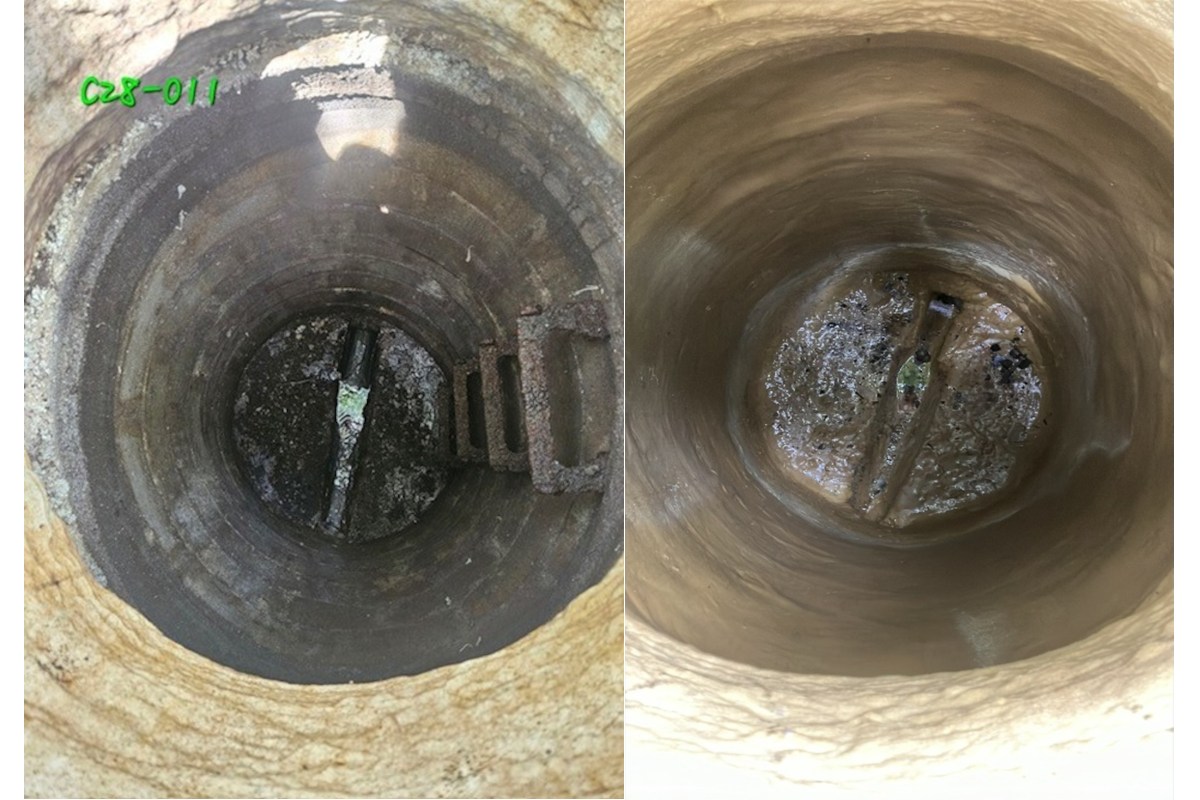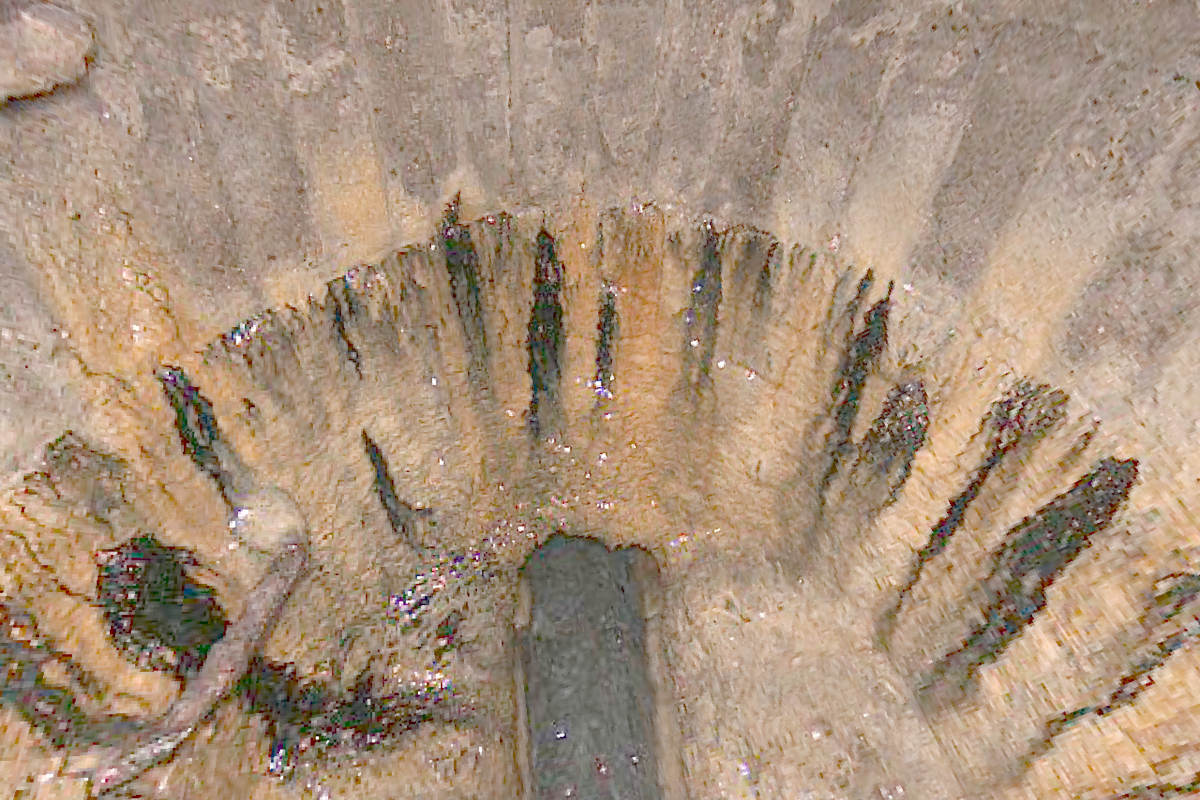
Trenchless Rehabilitation of Pittsburgh’s M29 Outfall Sewer
Challenging Project on the Shores of the Monongahela River
Site conditions often determine the feasibility of trenchless vs. open cut repair. One recent project along the shores of the Monongahela River in Pittsburgh, Pennsylvania really bring this to light.
The roots of this project can be traced to 2016 when the Allegheny County Sanitary Authority (ALCOSAN) inspected the M29 combined sewer outfall and found the brick structure to be in severe disrepair. A solution had to be found before a catastrophic event occurred that would damage not only the sewer itself, but the railroad tracks and state highway above.
Sewer History
The M29 outfall was initially built to culvert a stream and provide land for a steel plant operation along the Monongahela River in the 1800s. The original culvert was a 10-ft by 14-ft rectangular brick structure, more than 30 ft deep and 120 ft long. It was extended another 330 ft in 1892 with a 15-ft brick arch structure for a total length of 450 ft to the current riverbank location.
Over the years on the steel plant site, a state highway and local railroad were constructed on top of the M29 structure, preventing access from above to the 30-ft-deep culvert. Today, the M29 outfall serves as the second largest CSO in the City of Pittsburgh and it is a significant part of the Pittsburgh Water and Sewer Authority (PWSA) and the downstream ALCOSAN combined sewer interceptor network. As such the project is jointly owned by PWSA and ALCOSAN.

Designing a Sewer Repair
The engineering team evaluated several replacement, repair and trenchless rehabilitation options for the culvert. The designers selected to competitively bid geopolymer structural lining or shotcrete lining with steel reinforcement due to the size and accessibility of the structure. Given the sheer size and location of the outfall pipeline, trenchless rehabilitation would not be a standard application for design or construction. The M29 outfall application required careful planning and design.
Access to the CSO culvert had two options; from either the river outfall via barges or secondary access to the structure was 450 ft upstream in the diversion chamber through a single manhole opening 30 ft below an active state highway travel lane. Additionally, the existing invert of the culvert sat 3 ft below the normal pool of the Monongahela River. This required the installation of a large sheet metal cofferdam with a continuous, 24/7 pumping operation to dewater the structure.
Most of the equipment and materials used for the culvert rehabilitation were to be brought in through the outfall, with limited need to use the single manhole in the PennDOT roadway. Rehabilitation of a single pipeline is typically completed within 2 to 3 days of work under dry weather conditions. The M29 CSO presented a challenge based on the duration of the rehabilitation given the structure’s size and frequency of wet weather days in Pittsburgh.

Construction sequencing for starting/stopping work was developed around the anticipated weather each workday, with an estimated 12-minute window to clear the site of all workers and equipment in the event of unforeseen rain. Additionally, the contractor had to work within time restrictions of the highway and operational railroad above.
In addition to the trenchless rehabilitation of the CSO structure, a new cast-in-place concrete river end wall with a 15-ft metal flap gate, and modifications to the upstream concrete diversion weir were designed to improve hydraulics within the upstream system.
Unusual for a project like this, a physical scale model of the culvert and outfall and a computational hydraulic model were built to simulate the sewer system interaction with the Monongahela River during various wet weather events and river stages. The models were used to understand the dynamics of the outfall volume during storm events to activate the flap gate and the river intrusion into the sewer system, as well as sediment transport from the river into the outfall.
The final construction scope included: filling major voids in the brick walls from inside the structure; lining the brick culvert walls with shotcrete; reforming and establishing a new concrete invert; applying an epoxy corrosion inhibitor on all surfaces; and replacement of the existing stone endwall with a new cast-in-place concrete endwall with a flap gate. The design incorporated Cooper E-80 railroad loading calculations for the new endwall and shoring and the shotcrete lining system 30 ft below the tracks to ensure it met the lifetime design requirements.

The Art of Sewer Rehab Preparation
In the summer of 2021 work began with dewatering and a pre-construction inspection, revealing the structure to be in much worse condition than anticipated. Significant voids in the culvert crown and walls were discovered, requiring urgent contractor attention to alleviate a potentially catastrophic failure. Voids were filled with rebar reinforcement and the same shotcrete materials that would be used for the culvert lining.
Before installing the lining, the contractor removed more than 400 tons of sediment, gravel and brick from the CSO with a mini excavator. Removing the sediment and installing the metal flap gate will also lessen the operational maintenance and cleaning costs within the downstream ALCOSAN combined sewer system and alleviate hydraulic bottlenecks and flooding upstream.

Construction Success
The trenchless construction activities required continuous air monitoring within the CSO and continuous weather monitoring for the occasional summer pop-up thunderstorm. Since the facility is a combined sewer overflow that serves a large portion of Pittsburgh and is along the Monongahela River, all construction was planned to occur during dry weather operations. During wet weather events, flow in the outfall reaches the crown of the culvert, and the rising river levels overtop the cofferdam. Safety and scheduling for all construction activities were constantly considered during the project’s design and implementation.
Additionally, traffic detours and flagging were in place to allow secondary access within the PennDOT roadway. The existing railroad at the top of the riverbank transported loads of steel across the culvert on weekday nights. Contractor site access to the riverbank was coordinated each shift to allow crossing the tracks to unload materials. Coordination of the access constraints led to a very detailed construction sequence to facilitate the construction of the shotcrete lining of the culvert.
Construction was completed in the Spring of 2022. Inclusive of weather delays, construction was substantially complete in six months, except for the fabrication and installation of the metal flap gate.
Mallory Griffin, P.E., is a consulting engineer in Pittsburgh.




